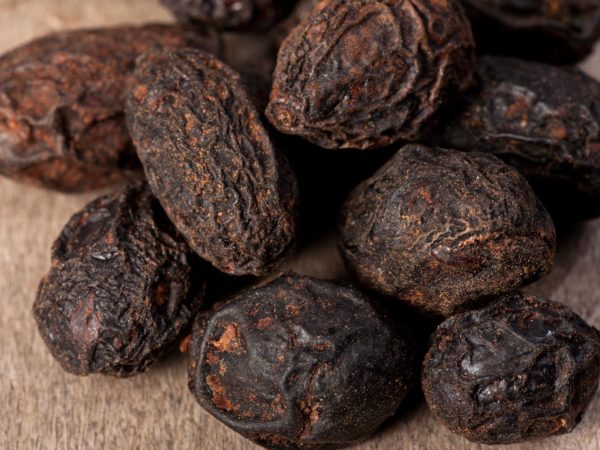Saw Palmetto

Saw Palmetto (Serenoa repens)
Saw palmetto (Serenoa repens), best known today as a treatment of benign prostatic hyperplasia (BPH), the berries of the saw palmetto plant have a long history of use as food and medicine among Native Americans. They were first used to treat male urinary tract disorders, as well as to boost sperm production and libido. Saw palmetto may help address BPH (a benign enlargement of the prostate gland) and related urinary tract symptoms by slowing the conversion of testosterone to dihydrotestosterone via inhibition of the enzyme (5α-reductase) and shrinking the inner lining of the prostate. In animal studies, saw palmetto inhibits the growth of tumor cells, which might mean that it could be useful in treating prostate cancer. However, much more research is needed to confirm this potential benefit in humans. Saw palmetto also appears to possess anti-inflammatory activity.
Uses For Saw Palmetto:
In addition to its use as a treatment for BPH, saw palmetto is used to treat colds and coughs, sore throat, asthma, chronic bronchitis, chronic prostatitis / male chronic pelvic pain syndrome, and migraine headache. It is also used as a diuretic to increase urine flow, as a sedative, and as an aphrodisiac. Some men use it as a treatment for baldness. However, experts rate saw palmetto as “possibly ineffective” for treatment of BPH, and suggest there to be insufficient evidence regarding its utility for prostate infections, chronic pelvic pain syndrome, prostate cancer, baldness, colds and coughs, sore throat, asthma, chronic bronchitis, migraine headache, increasing breast size, or for reducing bleeding after prostate surgery. Evidence from studies on the usefulness of saw palmetto as a treatment for BPH is mixed, with more recent trials suggesting less efficacy than previously believed.
Saw Palmetto Is Available In:
You can buy saw palmetto as dried berries, in powder form, and as capsules, tablets, liquid tinctures, and liposterolic extracts. Look for products standardized to contain 80 to 90 percent fatty acids and sterols. Buy only from reputable companies.
Saw Palmetto Interactions, Side Effects & Warnings:
Saw palmetto’s side effects may be similar to those of the drug finasteride (Proscar), also used to treat BPH. Saw palmetto should not be used if you also take finasteride or other drugs for BPH except on the advice of your physician. Because saw palmetto can affect blood clotting, don’t use it when taking other anticoagulant drugs, including warfarin (Coumadin), clopidogrel (Plavix), and aspirin. Moreover, because of saw palmetto’s hormonal effects, women should not use it when on hormone replacement therapy or birth control pills.
Side effects of saw palmetto tend to be mild and can include dizziness, headache, nausea, vomiting, constipation, and diarrhea. However, saw palmetto’s safety during pregnancy or breastfeeding is not known and its hormonal effects it could endanger a pregnancy. Because saw palmetto might slow blood clotting, it should not be used within two weeks of scheduled surgery.
When Buying Saw Palmetto:
Look for extracts standardized to 80 to 90 percent fatty acids and sterols. Choose products only from reputable companies.
Dosage:
For BPH the typical dose is 160 mg twice a day. Notify your healthcare provider when using this product.
Child Dosage:
Not recommended for children.
Dr. Weil Says:
The clinical evidence that saw palmetto can help reduce the size of the prostate, or at least shrink the inner lining of the gland and reduce obstructive urinary symptoms, is contradictory, but many men with BPH seem to benefit from its use, and it may help promote healthy prostate function. It is worth a therapeutic trial, at least for those with BPH, but speak with your doctor first.
SOURCES:
Consumerlab. consumerlab.com/results/print.asp?reviewid=sawpalmetto
Natural Medicines Comprehensive Database. Saw palmetto. naturaldatabaseconsumer.therapeuticresearch.com/nd/Search.aspx?rn=3&cs=NONMP&s=NDC&pt=100&id=971&fs=NDC&searchid=46170697
University of Maryland Medical Center. Saw palmetto. http://umm.edu/health/medical/altmed/herb/saw-palmetto
Bent S, Kane C, Shinohara K, et. al. Saw Palmetto for Benign Prostatic Hyperplasia. N Engl J Med 2006,354:557-566.
Russo A, Capogrosso.P, La Croce G, et al. Serenoa repens, selenium, and lycopene to manage lower urinary tract symptoms suggestive for benign prostatic hyperplasia. Expert Opin Drug Safety 2016; DOI: 10.1080/14740338.2016.1190830
Reviewed by Russell Greenfield, M.D., August, 2016.









